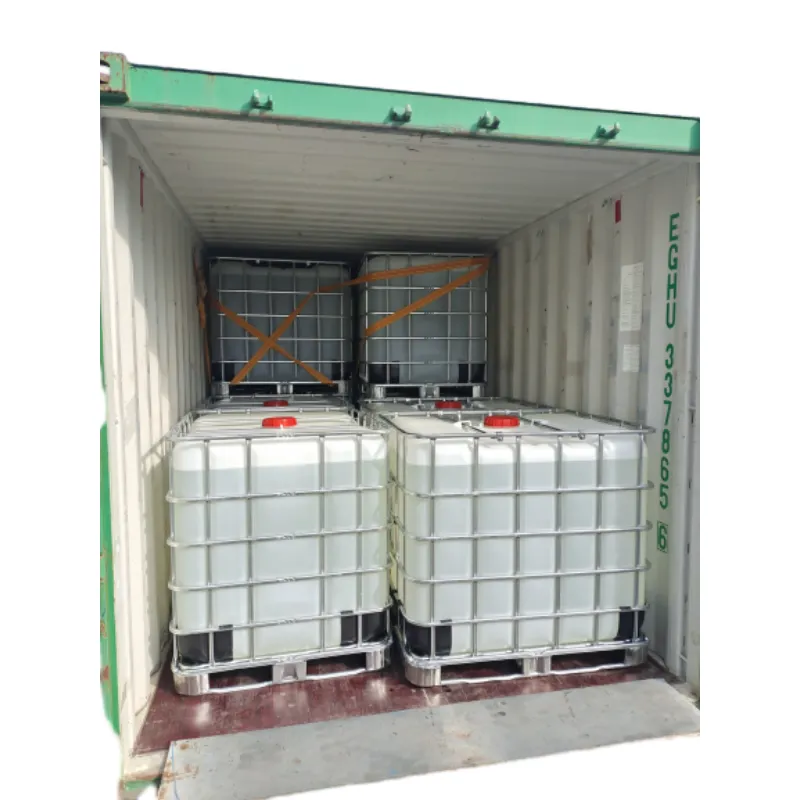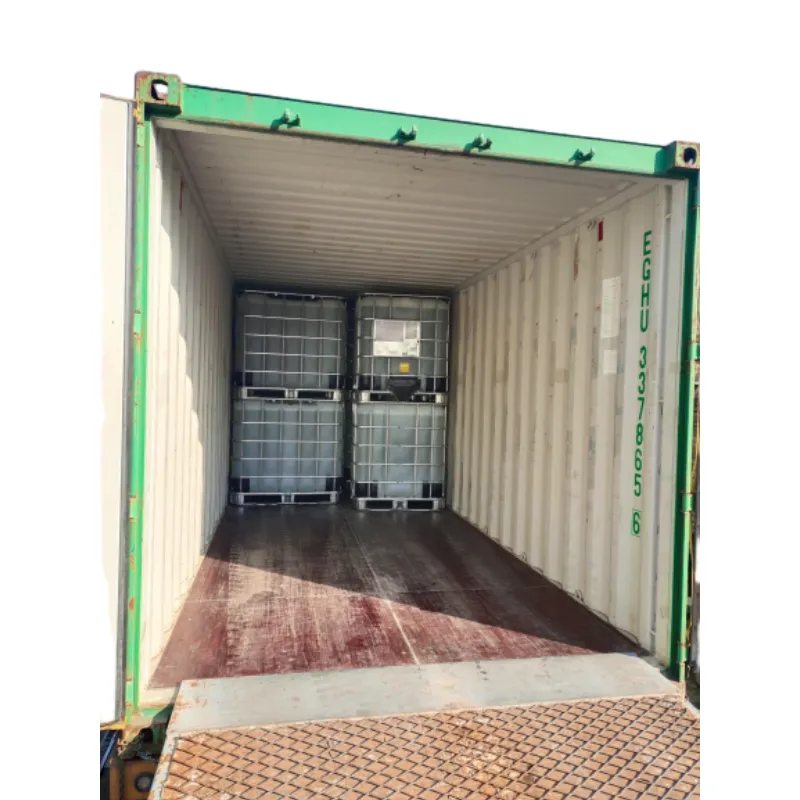
Triisopropanolamine (TIPA) | High Purity Cement Aid
Field Notes on Triisopropanolamine (TIPA): what buyers quietly ask me
I’ve sat in a lot of procurement calls where someone whispers, “Will TIPA really lift late strength?” Short answer: yes—when the grade is right and the cement chemistry cooperates. Longer answer below, with data, caveats, and a few war stories.

What is Triisopropanolamine used for today?
- Cement grinding aids and strength enhancers (popular for 7–28 day gains).
- Neutralizing/solubilizing amine in coatings, surfactants, and metalworking fluids.
- Emulsifier/co-emulsifier in select formulations; pH buffer in cleaning chemistry.
Industry trend? Blenders are shifting toward multi-functional amine packages: Triisopropanolamine paired with TEA/DEIPA or organic acids to balance early vs. late strength and reduce clinker factor. Sustainability by stealth, if you like.
Typical specifications
| Parameter | Typical value (≈) | Method / standard |
|---|---|---|
| Appearance | Clear to slightly hazy liquid | Visual |
| Assay (TIPA) | ≥ 85 wt% (liquid grade); 99% grade on request | Titration (vendor SOP), ref. ISO 17025 labs |
| Water | ≤ 15 wt% | Karl Fischer (ASTM E203) |
| Color (APHA) | ≤ 80 | ASTM D1209 |
| Density @20°C | ≈ 1.02–1.04 g/cm³ | ASTM D4052 |
| Viscosity @25°C | ≈ 300–600 mPa·s | ASTM D445 |
| pH (10% aq.) | ≈ 10–11 | Potentiometric |
| Shelf life | 12 months in sealed drums/IBCs, cool/dry | Real-world use may vary |

Process snapshot (how Triisopropanolamine is made)
Feedstocks: propylene oxide + ammonia. Method: controlled ammonolysis to produce mono/di/tri-isopropanolamine mix; followed by fractional distillation and polishing (color control, water spec). QC uses KF, APHA, GC assay, and viscosity checks. Lots are validated against Triisopropanolamine application tests (cement mortar per ASTM C109 / EN 196-1).
Where it shines (and where it doesn’t)
- Cement: reported 28-day compressive strength gain ≈ 3–10% at 0.02–0.06% bwoc, depending on clinker mineralogy. Some lines get less; sulfate balance matters.
- Coatings/inks: amine neutralizer with low odor and stable pH; helps pigment dispersion.
- Metalworking: buffers formulations while reducing cobalt leaching risk vs. stronger bases.
Caveat: very high dosages can increase set time or clash with certain retarders. Always run a quick ASTM C109 screen—trust me, it’s cheaper than a recall.
Vendor snapshot (real-world buying factors)
| Vendor | Purity options | Compliance | Packaging | Lead time |
|---|---|---|---|---|
| Tenger Chemical, Hebei (3-2-501, Jiuli Courtyard, Yuhua District) | 85% liquid; 99% low-color | ISO 9001; REACH-ready docs | 200 kg drums; 1000 L IBCs; bulk | ≈ 7–15 days ex-works |
| Vendor A (regional blender) | 85% only | Basic CoA; SDS | Drums/IBCs | ≈ 10–20 days |
| Vendor B (trader) | Varies by lot | CoA only | Mixed lots | Spot-dependent |
Customization I’ve seen: low-APHA grade for white cement; tailored water content for winter pumping; corrosion-inhibitor blends where Triisopropanolamine plays pH-buffer and complexant.

Quick case notes
Case 1 — Cement plant, Southeast Asia: switching 50% of grinding aid package to Triisopropanolamine yielded ≈ +6% 28-day strength on CEM I with C3A ≈ 8%, dosage 0.03% bwoc. Energy draw unchanged; sulfate adjusted by +0.2%.
Case 2 — Waterborne varnish: replacing stronger amines cut amine odor, stabilized pH at 8.8–9.2 over 8 weeks at 40°C (ASTM D1849 storage). Customers reported fewer viscosity swings—small win, big smiles.
Testing, safety, and standards
Benchmark mortars with ASTM C109 or EN 196-1; track setting (ASTM C191) and workability. For QA, lean on APHA color, KF water, viscosity (ASTM D445). SDS should align to GHS; ensure REACH status if importing to EU. And, to be honest, don’t skip yellow-metal corrosion checks in metalworking fluids.
Final buying tip
Ask for a pilot drum and a cement-strength panel before committing. With Triisopropanolamine, the right dosage and sulfate balance are half the magic.
References
-
What Is a Food Additive? Global Insights, Applications & Future TrendsNewsNov.24,2025
-
968 Sweetener: The Modern Solution for Health-Conscious SweeteningNewsNov.23,2025
-
Discover the Benefits and Uses of 965 Sweetener (Erythritol) | Tenger ChemicalNewsNov.23,2025
-
961 Sweetener - A Next-Gen Sugar Alternative for Health and IndustryNewsNov.23,2025
-
Understanding 960 Sweetener: The Modern Sugar Alternative for Health and IndustryNewsNov.22,2025
-
Everything You Need to Know About 955 950 Sweeteners – Benefits, Uses, and TrendsNewsNov.22,2025
-
953 Sweetener: Global Insights, Applications, and Future TrendsNewsNov.21,2025
Hebei Tenger Chemical Technology Co., Ltd. focuses on the chemical industry and is committed to the export service of chemical raw materials.
-

view more DiethanolisopropanolamineIn the ever-growing field of chemical solutions, diethanolisopropanolamine (DEIPA) stands out as a versatile and important compound. Due to its unique chemical structure and properties, DEIPA is of interest to various industries including construction, personal care, and agriculture. -

view more TriisopropanolamineTriisopropanolamine (TIPA) alkanol amine substance, is a kind of alcohol amine compound with amino and alcohol hydroxyl, and because of its molecules contains both amino and hydroxyl. -

view more Tetramethyl Thiuram DisulfideTetramethyl thiuram disulfide, also known as TMTD, is a white to light-yellow powder with a distinct sulfur-like odor. It is soluble in organic solvents such as benzene, acetone, and ethyl acetate, making it highly versatile for use in different formulations. TMTD is known for its excellent vulcanization acceleration properties, which makes it a key ingredient in the production of rubber products. Additionally, it acts as an effective fungicide and bactericide, making it valuable in agricultural applications. Its high purity and stability ensure consistent performance, making it a preferred choice for manufacturers across various industries.





